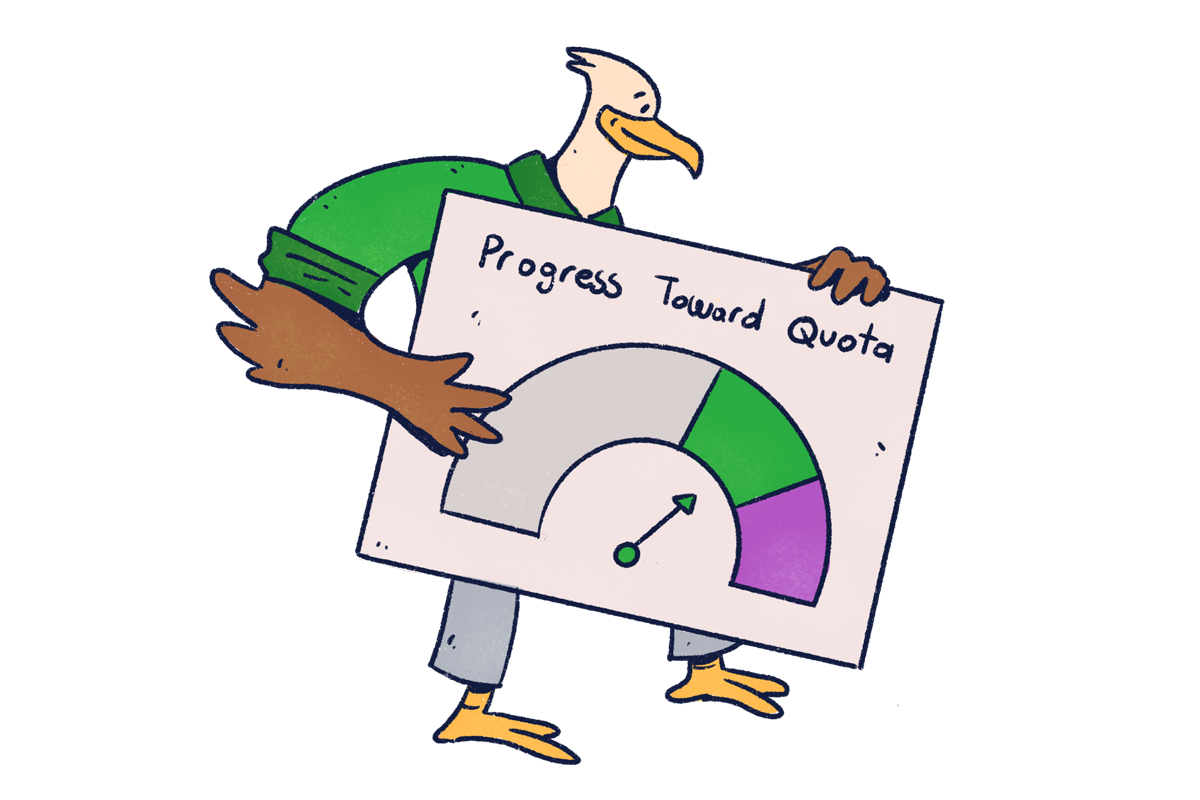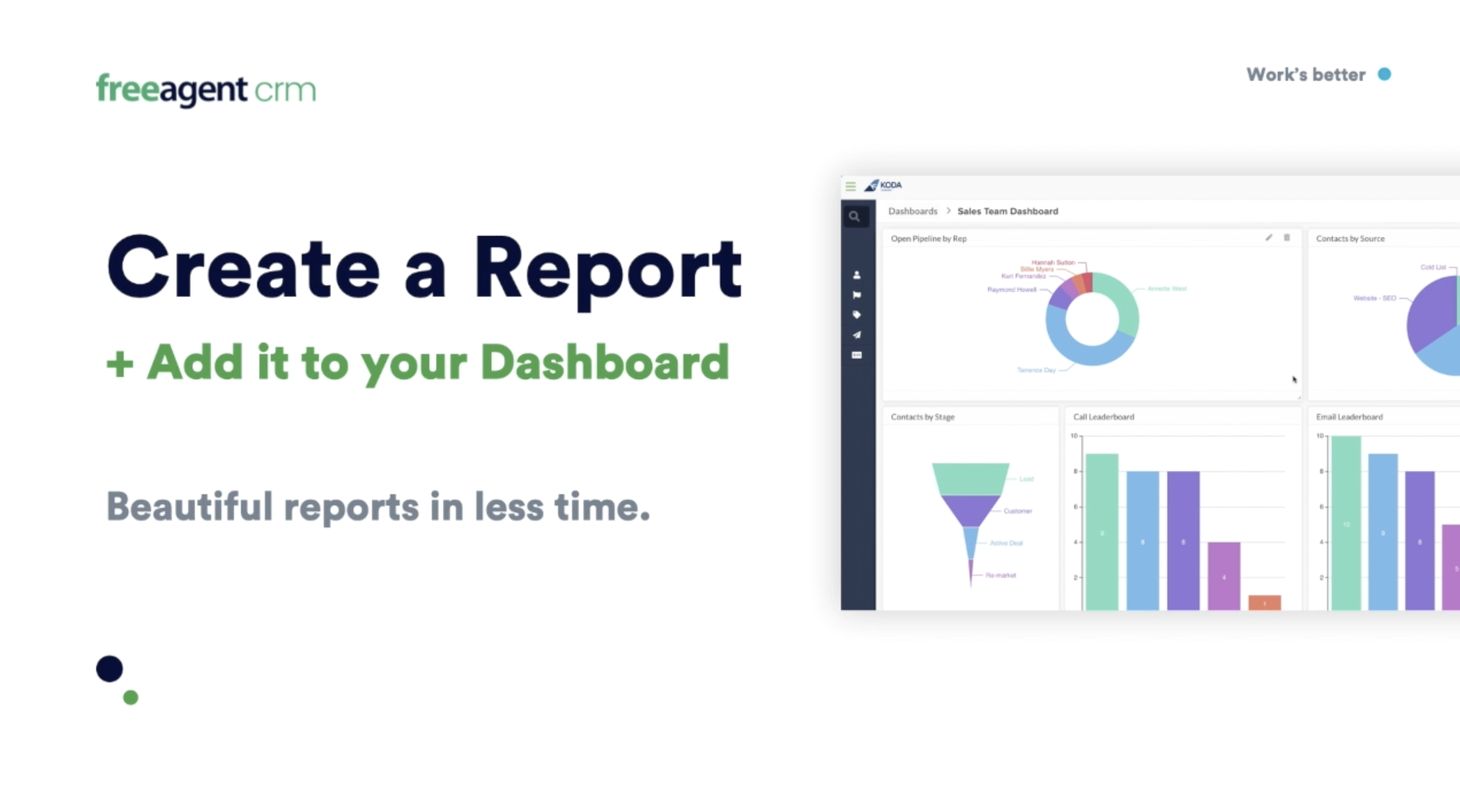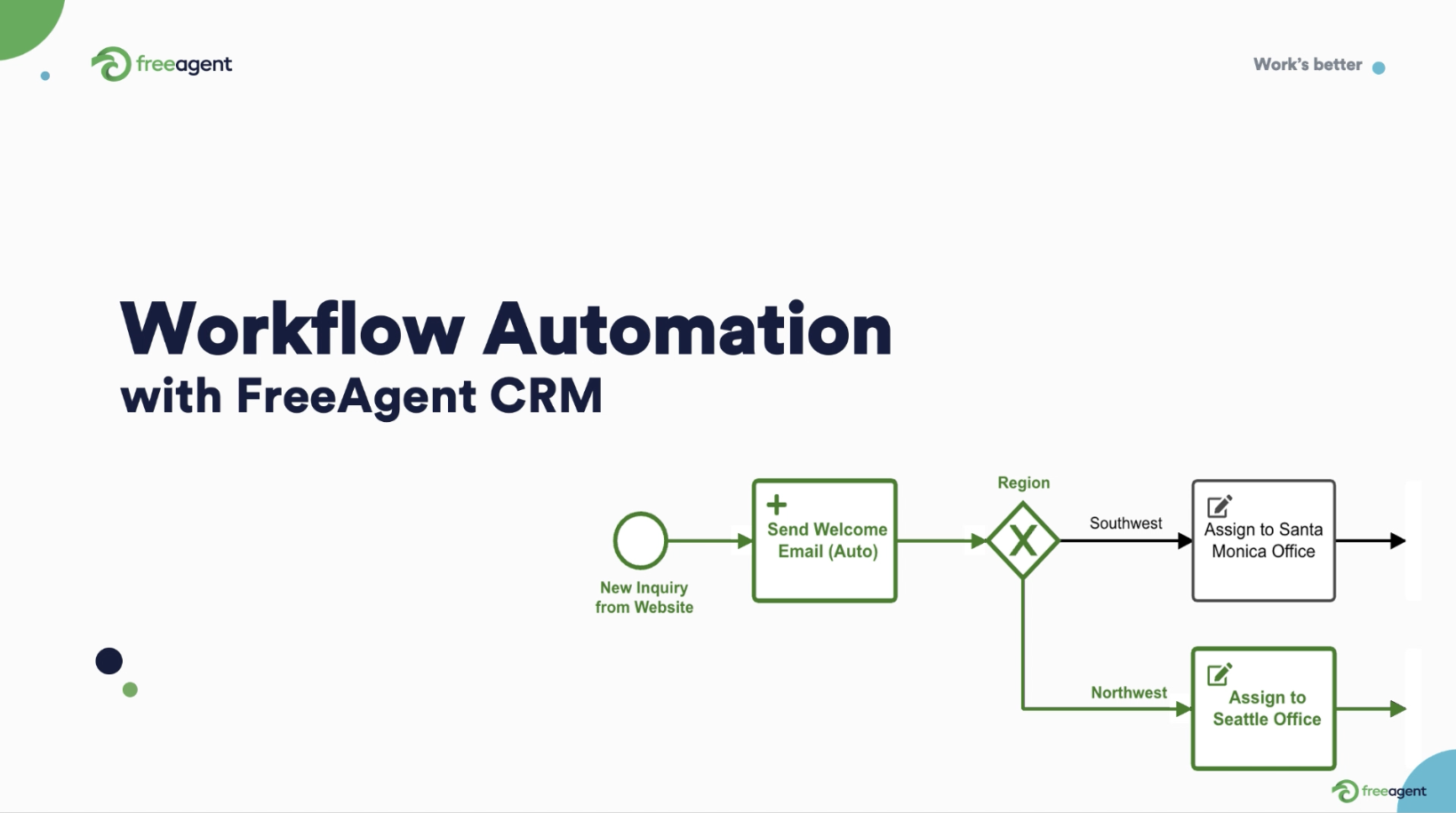Today’s sales managers are looking more and more towards data-driven insights to provide guidance on how to optimize their sales processes and enhance sales performance.
A big part of this evolution is the adoption of technology that can gather and store sales data and transform it into KPIs (key performance indicator).
The pinnacle of this technology is CRM (customer relationship management).
With CRM, sales leaders can track every activity performed by their sales team and create reports and dashboards that translate those activities into quantifiable sales metrics that measure sales performance.
In this article, we will identify the top 10 CRM KPIs that sales managers should be using to track sales performance in 2024.
What is CRM?
A CRM system is a software toolset that assists businesses with the day-to-day management of their people (customers and employees), work processes, products, and projects.
Once thought of primarily as a tool for the sales team, CRM systems have evolved to address the needs of many different business aspects, including marketing, customer service, and HR.
Through the use of advanced automations tools and data centralization, CRM software can help businesses improve communication (both internal and external), work more efficiently, and track performance.
1. Win rate
Win rate (sometimes referred to as sales opportunity conversion rate) is the measure of the percentage of sales opportunities that result in a closed deal or sale.
This sales KPI is as a good indicator of the efficacy of your sales process and the ability of a sales rep/sales team to capitalize on a sales opportunity and win deals.
Win rate varies by industry, product, and sales model so determining whether your rate is good requires you to find benchmark data from your competitors and industry peers.
For help finding sales benchmark data, check out our article, Using Sales Benchmarks to Evaluate Sales Performance.
2. Average deal size
Average deal size is the measure of the average monetary value of a deal or sale. It is calculated by dividing the total sales revenue generated during a specific period of time by the number of deals closed during that same period of time.
Average deal size can help a sales leader create a sales strategy designed around the preferences and buying patterns of their customers.
For example, if you want to increase your average deal size, you could bundle lower-priced products together or train your sales reps to recognize upsell and cross-sell opportunities.
Additionally, the average deal size sales KPI can help you set a sales target that is challenging but achievable, ensuring your sales reps are properly motivated by your sales reward structure.
Our article, Rewarding Sales Success: SPIFFs vs. Commissions provides advice on creating a sales reward structure that is right for your business.
3. Customer acquisition cost
Your customer acquisition cost is a measure of the average cost you incur to acquire a new customer.
This includes the total costs of all the marketing, advertising, and sales efforts used to attract and convert leads and opportunities into new customers.
Your customer acquisition cost can help you identify your most effective lead-generation channels and sales strategies so you can more efficiently allocate resources.


4. Sales cycle length
Sales cycle time is the measure of the time it takes for a sales lead to progress all the way through your sales funnel — from first contact through to the closing of the deal.
This sales metric provides insights into the efficiency of your sales process and can vary significantly based on your industry, product, and sales strategy.
A detailed analysis of your sales cycle time can help you identify bottlenecks in your sales process and provide the insights you need to get deals over the finish line faster.
5. Sales productivity rate
Sales productivity rate is the measure of the amount of revenue generated per salesperson over a given period of time.
This is a good sales metric for evaluating the effectiveness of your sales representatives and can help inform sales strategies, best practices, and employee training.
For example, if a sales manager can identify the sales rep with the highest sales productivity rate, they can further analyze what that sales rep is doing that may lead to those higher sales productivity rates.
Inversely, your sales representatives with lower sales productivity rates may have practices in common that lead to those lower rates that can be identified and rectified.
6. Customer lifetime value
Customer lifetime value is an estimation of the total sales revenue you can expect from an existing customer throughout the entirety of their relationship with your business.
Understanding the lifetime value of your customers can help inform your pricing strategies and forecast growth.
For example, you might be willing to price a product at a low-profit margin (or even a loss) in order to acquire customers if you know that those products will lead to further purchases down the line.
A good example of this strategy is video game consoles. These consoles are often sold at a price close to or even below their production cost because the vendors know they will make up for the loss in future video game sales.
7. Customer retention rate/Repeat purchase rate
Your customer retention rate/repeat purchase rate is a measure of the percentage of customers who continue to buy your products or services after their initial purchase.
This KPI is a good indicator of your customer’s satisfaction with your product and services overall and can be used by sales leaders to identify products and services that provide the best upsell and service expansion opportunities.
This metric is a big contributor to your customer lifetime value KPI and can be used in a similar fashion to inform pricing strategies.


8. Recurring revenue
Recurring revenue is a measure of the sales revenue your business expects to receive in a given period of time (ARR- annual recurring revenue, MRR- monthly recurring revenue).
Tracking recurring revenue is common for businesses that operate on a subscription model or offer products and services that require regular, ongoing purchases.
Recurring revenue can be used as a benchmark metric to measure the performance of your sales teams in regard to up-selling, cross-selling, and customer retention strategies.
9. NPS/CSAT
Customer satisfaction can be difficult to measure so many businesses employ tools such as NPS (Net Promoter Score) or CSAT (Customer Satisfaction Score) surveys to gather customer feedback.
For sales leaders, these surveys can be used to assess how well their sales techniques are being received by customers. They are also great for assessing the performance of individual sales reps.
The following are questions that can be used to evaluate sales performance.
- On a scale of 1-10, how would you rate the salesperson who assisted you?
- On a scale of 1-10, how would you rate your shopping experience?
- Were you offered (a specific product or service)?
10. CRM ROI
CRM is renowned for its high ROI (return on investment). According to Nucleus Research, every dollar spent on CRM translates to an $8.71 return.
While that is a fine benchmark, knowing how much your CRM is returning to your own pockets is what matters most.
Getting an exact number down to the penny can be a challenge, but many of the KPIs on this list can speak to the benefits your CRM provides.
For example, when your opportunity conversion rate improves after your CRM implementation, you can be sure the CRM is a significant contributor. The same can be said for decreasing your sales cycle time and increasing your sales productivity rate.
CRM ROI is not a one-time calculation. Regularly review and update your results to account for the ongoing benefits your CRM provides.
FreeAgent CRM is the best CRM for tracking sales performance
FreeAgent CRM is a modern work management platform that provides top-of-field software tools for organizations of all sizes and technical proficiency.
FreeAgent is the best CRM for tracking sales performance because FreeAgent is:
- Easy to use- FreeAgent’s modern user interface is quick to learn and easy to use, encouraging teams to work within the platform and providing you with a comprehensive and accurate accounting of sales activities.
- User-configurable- With FreeAgent, the power is in your hands. You can customize and personalize FreeAgent to fit the specific needs of your business and teams without external support.
Plus, FreeAgent offers:
- Robust integration- FreeAgent’s flexible toolset and extensive integration library support teams and businesses of all types and structures.
- Generative AI- Uplift your work with Generative AI-powered features. With FreeAgent, you can access AI across any app, allowing you to get the information you need faster.
With FreeAgent, it’s really that simple.
To see FreeAgent in action, get a demo, and discover for yourself how we are leading the way to a better workday.






